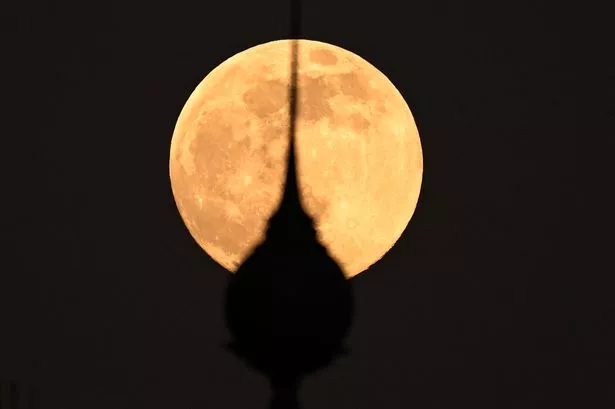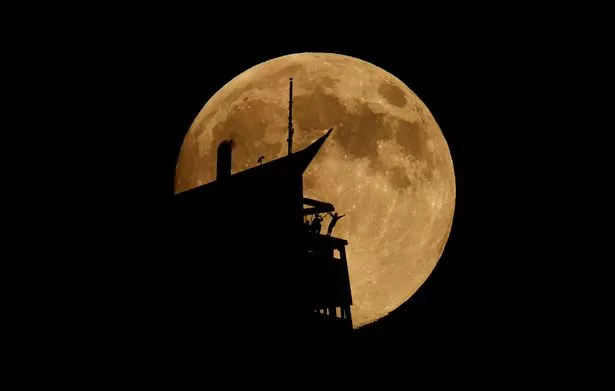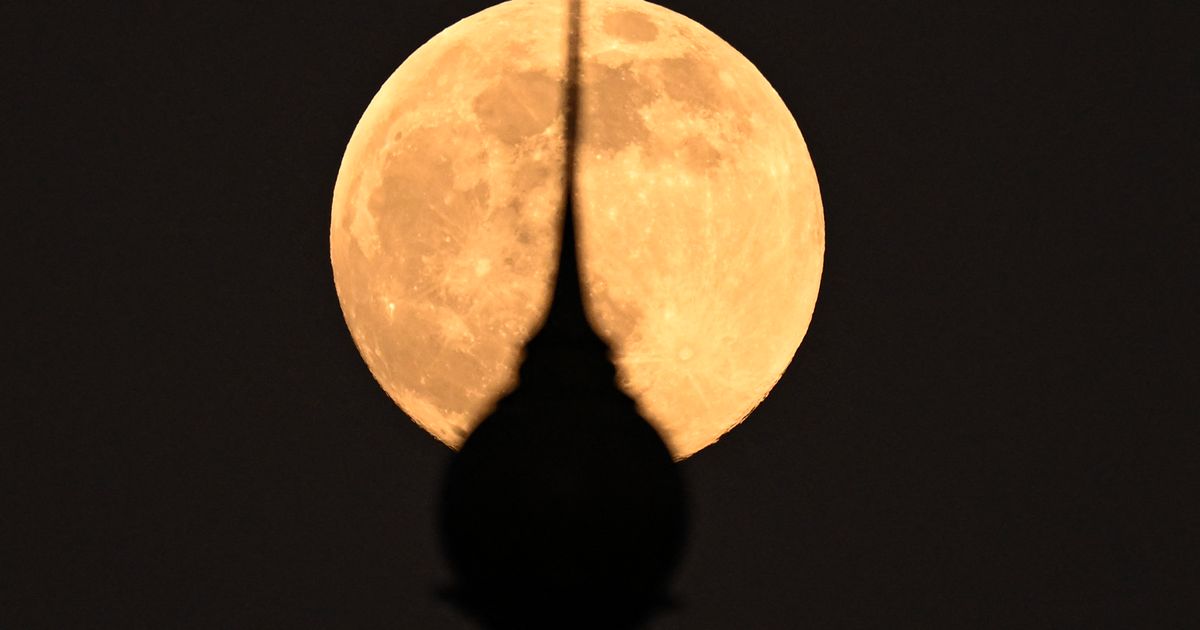Also known as the Beaver Moon, this full moon has been dubbed the “brightest and biggest” full moon people will see in their lifetimes The supermoon known as the Beaver Moon is seen behind the dome of a historic building in Mexico City on November 4(Image: YURI CORTEZ/AFP via Getty Images)
The supermoon known as the Beaver Moon is seen behind the dome of a historic building in Mexico City on November 4(Image: YURI CORTEZ/AFP via Getty Images)
Stargazers across Ireland are in for a treat as an incredible supermoon will illuminate the sky on Wednesday.
The second of four supermoons in a row will be visible rising at sunset on Wednesday evening, to the naked eye it also looks full on Tuesday and Thursday as well. Known as the Beaver Moon, this full moon has been described as the “brightest and biggest full moon” people will see in their lifetimes.
A supermoon occurs when the full moon happens at the same time that the moon is closest to Earth in its elliptical orbit around the Earth. This can lead to the Full Moon being 30 per cent brighter than when it is at its most distant from the Earth.
Another effect called the ‘Moon Illusion’ can also make the full moon look bigger in the sky as it rises. The moon is technically full on Wednesday afternoon at 1.19pm Irish time. But the moon looks ‘full’, to the naked eye a day or two either side of this time.
The moon, when it rises at sunset, will look perfectly full on both Tuesday and Thursday evenings as well as Wednesday evening, giving people a number of chances to snap the moon in a hopefully clear sky.
 The Beaver Moon rises behind 30 Hudson Yards as people participate in City Climb at the top of the building in New York City on November 4, as seen from Hoboken, New Jersey. (Image: Gary Hershorn/Getty Images)
The Beaver Moon rises behind 30 Hudson Yards as people participate in City Climb at the top of the building in New York City on November 4, as seen from Hoboken, New Jersey. (Image: Gary Hershorn/Getty Images)
“As well as alerting all eight million people on this island to this wonderful supermoon rising on Wednesday evening, we are asking the general public to line up the moon with interesting objects or landscapes in the foreground and send their best snap to be published in Astronomy Ireland magazine, which will be archived in the National Library of Ireland for all time. See our website astronomy.ie for where to send your photograph,” said Astronomy Ireland editor David Moore.
“Camera phones are now very powerful and capable of producing superb night sky photographs like this. We have received many camera phone moon photographs and other celestial sights like 2024’s great Northern Lights displays in May and October of that year,” said Mr. Moore
“As it is rising and low down people can line up the supermoon with statues, landmarks, buildings, aircraft, birds, landscapes, mountains, standing stones, ships and seascapes and more to produce stunning photographs which we would be delighted to feature in the pages of Astronomy Ireland magazine,” said Mr. Moore.
Subscribe to our newsletter for the latest news from the Irish Mirror direct to your inbox: Sign up here.

